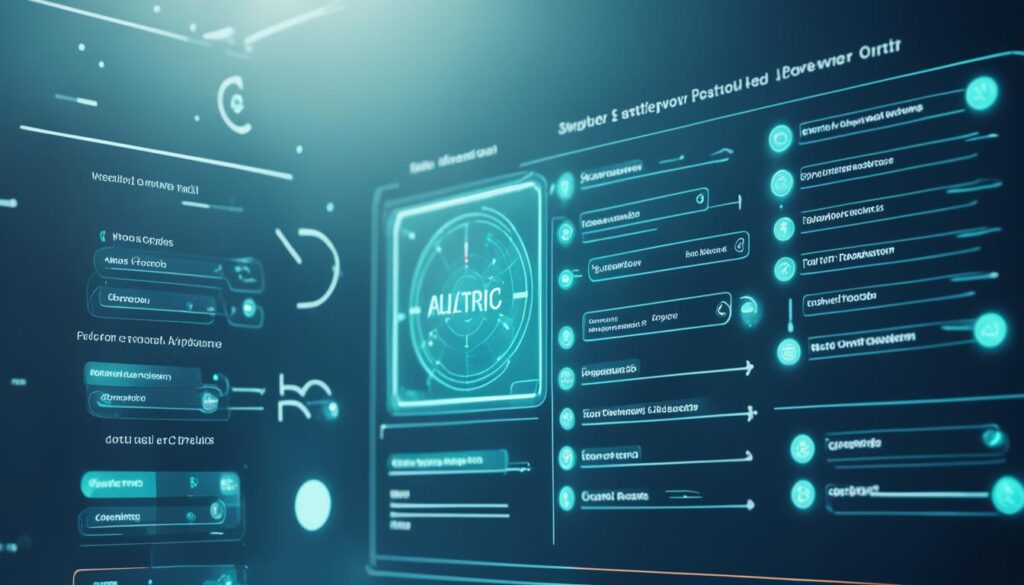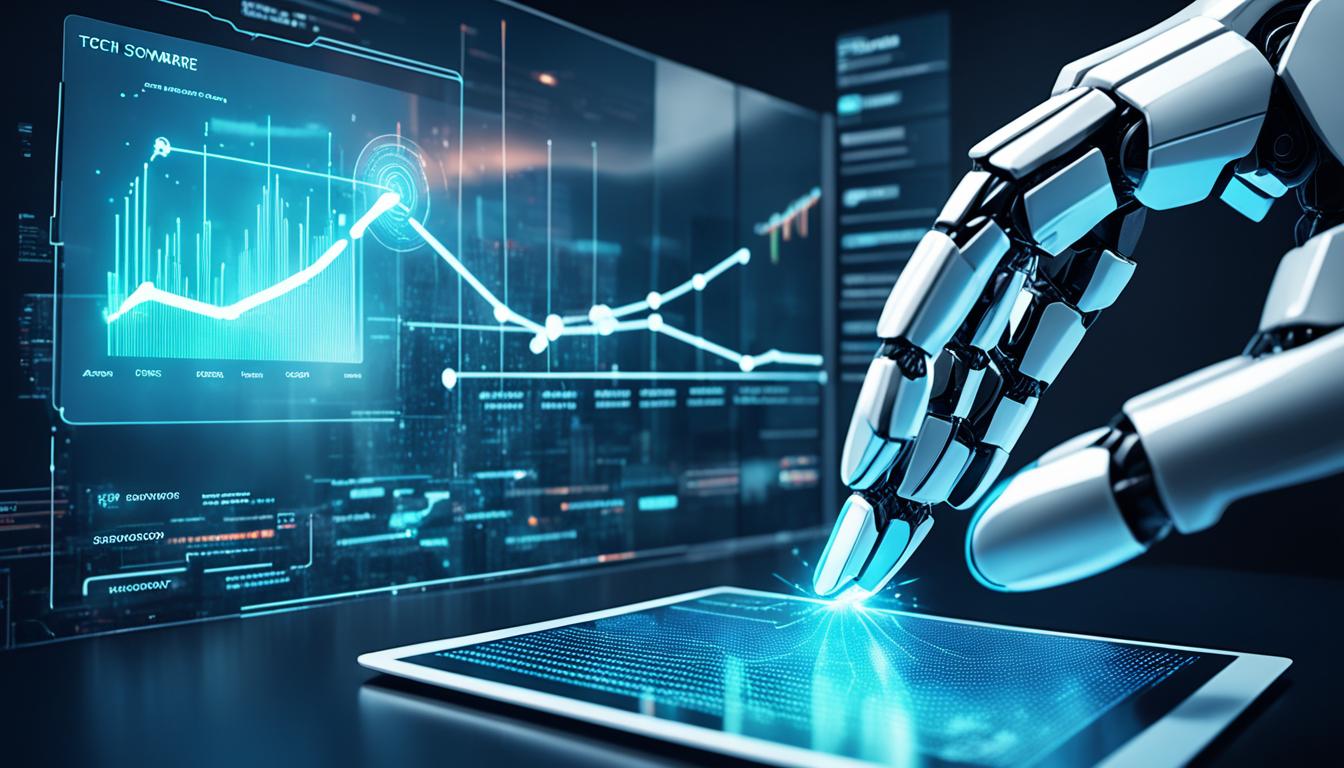Gartner’s research shows how emerging technologies change business software. It focuses on intelligence, user experience, and coordination. Commercetools, for example, stands out for offering specific business features and apps that focus on user experience. Dirk Hoerig from commercetools believes separating the app’s look from its functions can make apps more enjoyable to use. This idea matches what Gartner discovered.
Gartner predicts it will take over six years for many companies to start using Converged Business and Productivity Applications a lot. The market is gradually moving to a more flexible way of putting software together. Even though making these changes can be hard, Gartner and experts like Kelly Goetsch from commercetools suggest that breaking products into smaller parts and using APIs is key. This way, companies can better adapt to new consumer needs. Kelly Goetsch also supports the idea of focusing on APIs first. She agrees with Gartner that software buying is moving towards a more flexible and adaptable model.
Key Takeaways
- The generative AI market is set to grow to $1.3 trillion by 2032, revealing immense opportunities in AI-powered software.
- Robotics industry’s growth to $218 billion by 2030 indicates its increasing influence on software needs.
- Cloud computing is projected to rise to $2.4 trillion by 2030, revolutionizing software acquisition with scalable solutions.
- Immersive technology is poised to enhance enterprise applications, fostering closer collaboration and innovative user experiences.
- Generative AI is key to developing immersive content and automating development cycles, improving efficiency and reducing costs.
Introduction to Emerging Technologies in Software Acquisition
Emerging technologies are changing how companies buy software. Gartner says these new techs are making a big impact. They’re helping companies create better experiences for users and run smoother.
Things like AI and cloud computing are key now. They’re making software more flexible and easier to combine. This change is all about meeting what customers want and standing out from the competition.
The U.S. military is using new military tech to stay ahead in security. Since 2014, they’ve focused on using the latest tech strategically. This includes things like powerful computing, making sense of big data, and AI for future battles.
| Key Strategic Competitors | Technologies |
|---|---|
| China | Artificial Intelligence, Quantum Science, Autonomy, Biotechnology |
| Russia | Lethal Autonomous Weapons, Hypersonic Weapons, Directed Energy Weapons |
In 2018, quick tech changes were seen as a big deal in keeping the nation safe. The 2022 plan also points out tech like AI, quantum science, and space as important for fighting wars.
So, how we get software is quickly changing. Now, getting the right tech means looking at money, how to manage it, getting the right people, and the ways we get new tech.
The Impact of Emerging Technologies on Software Acquisition
The world of getting software has hugely changed thanks to new tech. Things like artificial intelligence and machine learning (AI/ML) and cloud computing have totally shifted how companies use and bring in software solutions.
Artificial Intelligence and Machine Learning
Artificial intelligence and machine learning are key in pushing tech forward in the software world. According to Deloitte, they help with smart automation, make business run smoother, and cut old technology down. Even the U.S. defense has seen how software is leveling the playing field, showing a big change. AI helps companies spend smarter on software and tech. This is making new ideas happen and helping the tech industry grow.
Cloud Computing
Cloud computing is changing old systems and making it easier to use Anythign as a Service (XaaS). This adds clarity and strength to supply chains. When the U.S. government switched to commercial cloud services like Google, Amazon Web Services, and Azure, it showed a big move. It’s overcoming big problems in the tech world, like country tensions and changing policies, and it’s predicting growth for the tech field in 2024. Using cloud in how companies buy software means they can be more flexible, grow easier, and stay ahead in a fast-changing market.
Companies like Tesla show the big role software plays in new areas like electric cars. Their success is heavily tied to their use of software for eco-friendly travel. Booz Allen is working hard in tech areas like DevSecOps, DataOps, and MLOps, showing how important innovation is to keep growing. The Defense Science Board notes that problems in making software are often more about management than pure tech. This is a sign of how management needs in this field are changing and growing.
| Technological Impact | Key Benefits | Examples |
|---|---|---|
| Artificial Intelligence and Machine Learning | Intelligent Automation, Innovation Stimulation, IT Spending Optimization | Defense Sector Software, Tesla’s Sustainable Vehicles, Booz Allen’s Tech Initiatives |
| Cloud Computing | Legacy System Modernization, Enhanced Transparency, Supply Chain Resilience | U.S. Government Cloud Adoption, SaaS Integrations, Global Tech Sector Growth |
Emerging Trends in Enterprise Software Procurement
The way companies buy software is changing fast. Gartner’s latest findings are pushing this change. Now, more companies are using a new method – composable commerce. This way of working is led by top companies like commercetools.
Composable commerce lets companies mix different software parts (PBCs) to create what they need. This marks a big change in how businesses get the software they use. It’s a move away from the old-fashioned one-size-fits-all approach.

Composable Commerce
Composable commerce is becoming a popular way to buy software. It makes setting up software less complicated. This new method is flexible and can change with your business’s needs.
Using PBCs makes it easier to add new software to what you already have. This makes your whole technology setup work better together.
To understand how buying software is changing, let’s look at insights from a study. The study looked at 2,027 new and growing companies around the world:
| Trend | Key Insights |
|---|---|
| Sustainable Procurement | Development of platforms for greener alternatives, emission tracking, and carbon footprint reduction. |
| AI Utilization | Accuracy in procurement tasks, automation, risk management, and strategic procurement. |
| Cloud & Mobile Procurement | Accelerates e-procurement due to flexibility, affordability, and efficiency in cross-collaboration. |
| Big Data Utilization | Supports revenue generation, cost reduction, negotiation, and risk management in procurement. |
| Microservices Architecture | Focuses on strategic tasks and value delivery in procurement software. |
| Cloud-native Solutions | Preferred over cloud-based solutions for enhanced procurement efficiency. |
Following these new trends in buying software, especially composable commerce, helps companies stay quick and ready for changes. This way, they can make sure their business is ready for the future. And they can solve difficult problems in new and creative ways.
As more companies use these new buying strategies, the way we buy software will become smarter and more focused.
Challenges and Opportunities in the New Software Buying Landscape
The world of buying software is changing fast, with technology leading the way. For companies, the global IT spending is growing. It’s expected to hit $4.6 trillion this year. This means businesses need to handle new chances and issues to keep up. Though the software market is growing, businesses face more hurdles than before.
Cost Management
Keeping software costs in check is key for many firms. Gartner’s report shows surprise costs often cause disappointment and customer loss. In fact, around half of top tech leaders say their firms struggle with cost control. But, those that did change how they work saw their revenue go up. This shows the importance of figuring out all costs and planning investments smartly. Already, 70% of tech CEOs are working on this.
Vendor Relations
Good relationships with software vendors are vital for successful buying. It’s important for companies to be clear and work closely with vendors. This helps avoid problems like wrong expectations after the deal is done. When buying software, doing lots of research on what each product can do is crucial. Many tech leaders worry about finding and keeping the right people. But, getting closer to vendors can lead to better, more fitting software choices.
Strategies for Successful Software Acquisition Amidst Tech Evolution
In today’s fast-evolving tech world, having the right software acquisition strategies is key. This is crucial for companies looking to buy software successfully Gartner advises vendors to change how they check and choose software to meet today’s needs. They say detailed user research, easy applications, and being endorsed by users are key.
Sales teams should know the software well to help buyers effectively. This keeps what’s promised and what’s delivered in line. Gartner points out seeing if buyers might regret their purchase and building strong relationships after the sale are important. Knowing these strategies helps prevent regrets and boosts user happiness.
The Role of Artificial Intelligence in Software Buying
Artificial intelligence is changing how we buy software. It brings automation and efficiency to processes, making work smoother and more productive. AI with predictive analytics helps software providers see what customers need. This reduces unhappiness with the product.

Automation and Efficiency
Many companies are now using AI to improve their work, especially in the SaaS industry. Big investments show how important this change is. The purchase of Qualtrics International by Silver Lake for $12.25 billion and Alteryx by Insight Partners & Clearlake Capital for $3.46 billion show how valuable AI-powered software is.
“AI technologies can automate around 80% of tasks, vastly enhancing process efficiency while leaving the remaining 20% to human intervention,” states the report from Deloitte.
Buying things is getting smarter and faster thanks to AI. It makes purchasing smoother, saving time and improving how we work with suppliers. It also helps us find better deals and new opportunities.
Predictive Analytics
Predictive analytics by AI is big news in the business world. Big buys like IBM’s Apptio for $4.6 billion and Juniper Networks for $12.8 billion show how seriously companies take this. They’re focusing on managing risk and making better decisions.
| Company | Acquisition | Value |
|---|---|---|
| Silver Lake | Qualtrics International | $12.25B |
AI is no longer just a fancy idea. It’s helping in day-to-day tasks, especially in buying stuff. We use AI to analyze spending, sort through what we buy, and learn about suppliers or markets.
So, AI is really changing how we buy software. It’s not just about making things automated. It’s also about using data to guess what customers might want. This keeps them happy and makes sure they don’t stop using our product.
Best Practices for Digital Transformation in Software Buying
When starting a digital transformation journey in software buying, the right strategies are key to success. Cloud deployment and tools for better collaboration are critical. They boost operational efficiency and spark innovation.
Cloud Deployment
Using cloud services is foundational for digital transformation. It helps businesses grow their IT with lower costs. Companies using cloud tools have seen a 40% boost in how flexible they can be. This change lets workers focus on more important tasks by automating the simple ones. This makes business more efficient and cost less.
Big players like Walmart use custom ERP systems to smoothen their operations. This makes their use of resources leaner and cuts down on costs. Updating old tech and adding services like XaaS is now a must for businesses that want to keep up in a fast-changing world.
Collaboration Tools
Tools that help people work together better are vital for a productive workplace. Gartner highlights their role in driving business tech forward. Adding these tools doesn’t just improve how teams talk; it also boosts innovation and problem-solving by 25%. They support working from anywhere, bringing teams together no matter where they are.
Businesses diving fully into digital transformation are 50% better at satisfying customers than others. Topping that off, businesses that make their digital interactions personal see a 20% jump in customer loyalty. So, using both cloud services and collaboration tools is a must for operations that are optimized and set for growth.
| Statistic | Impact |
|---|---|
| Automating Routine Tasks | Significant cost reductions, staff reallocation to higher-value activities |
| Cloud Deployment | 40% increase in operational flexibility |
| Collaboration Tools | 25% increase in innovation and problem-solving efficiency |
| Customer Satisfaction from Digital Transformation | 50% higher satisfaction rate |
| Increased Customer Loyalty | 20% increase through personalized interactions |
Future Outlook: Emerging Tech and Software Procurement
The impact of new tech on buying software is always changing. Generative AI is now a key player, ready to transform how we get software. It’s set to refine tasks and make us work more efficiently. This offers big gains for the future of tech and software buying.
Generative AI
Generative AI brings lots of pluses to getting software. It can handle tough jobs, help us make smarter choices, and make buying software better. Businesses that use it will see their tech buying change for the better, making them more creative and quick.
A big report predicts that the no-code and low-code tech market will hit $26.9 billion by the year’s end. It’s growing fast every year. This shows that generative tech is right at the heart of new business plans.
Just like Scrum and Kanban, Agile ways are key to making the most of generative AI. They focus on doing things step by step, working together, and being flexible. These methods are vital for getting the best from AI. They fit well with the trend of making software changes often and in small parts.
When it comes to using technoloy, being ethical and smart is a must. As AI and machine learning get more into software, sticking to the rules is very important. It helps keep our info private, builds trust, and meets the law.
But, we do face some hard spots. There’s not enough top skilled people in the software field. Businesses need more experts in new tech. Finding good people is really important if we want to truly benefit from AI.
Getting things out to market quickly is still key. This ensures you can keep up in the online world. Generative AI helps speed things up. By making the buying process smoother, it shortens product release time. This boost in speed can make your business stronger.
In the end, the path ahead for new tech and buying software looks bright. Generative AI is moving forward fast. With a good plan, companies can use this new tech to do better. They can be more efficient, flexible, and lead in their field.
Conclusion
Today, new technologies are changing how software is bought. This change brings both new opportunities and new hurdles. By moving towards smarter software solutions, the tech world is growing. It aims to make using tech better for everyone.
Experts like Gartner and Deloitte offer crucial advice in this shift. They show us the best ways to tackle the challenges in getting new software. Big companies, from Amazon to Tesla, are using AI, automation, and cloud computing smartly. They’re making work more efficient and sparking new ideas.
Businesses now need to smartly choose their software. They should look for tech that’s easy to adjust, improves how people interact with it, and simplifies work. Cloud services and tools for working together are key. They can help companies grow and fight through obstacles. With AI and data analysis, making key choices gets easier. This moves us towards a future of constant creativity and staying ahead in the market.



